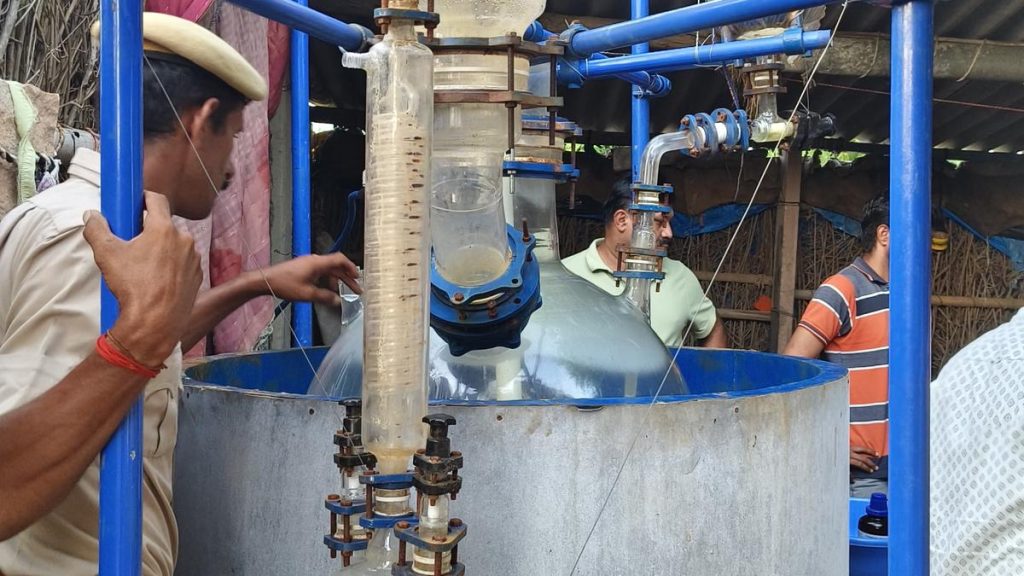Now Reading: CeNS Scientists Create Advanced Nanomaterial to Detect Explosives and Harmful Chemicals
-
01
CeNS Scientists Create Advanced Nanomaterial to Detect Explosives and Harmful Chemicals
CeNS Scientists Create Advanced Nanomaterial to Detect Explosives and Harmful Chemicals

Fast Summary
- Researchers from the Center for nano and Soft Matter Sciences (CeNS) have developed a multi-layer nanomaterial for detecting harmful chemicals and explosives like TNT and RDX at trace levels.
- the material combines reduced graphene oxide (rGO), silver nanoparticles (Ag), and cerium oxide (CeO₂) on a glass substrate, fabricated via physical vapour deposition techniques.
- traditional metals like gold are costly, while silver has limited long-term stability due to oxidation issues. Cerium oxide acts as a protective barrier for silver nanoparticles, enhancing durability in humid or warm conditions.
- Surface-enhanced Raman spectroscopy (SERS) underpins the innovation, amplifying molecular fingerprint signals for precise identification of chemicals even at extremely low concentrations.
- Environmental tests showcased substrate stability under extreme conditions-90% humidity and 70°C-while ensuring high performance in trace-level detection of contaminants.
- The material’s design also suppresses fluorescence emitted by silver nanoparticles using rGO to ensure clarity in detection signals.
- Demonstrations showed effective detection limits as low as 10 nM with the ability to identify multiple explosives across nanomolar concentration ranges.
Indian Opinion Analysis
The novel multi-layer nanomaterial developed by CeNS represents a significant step forward both scientifically and operationally.Its applications in airport security systems promise enhanced safety against threats like explosives while fostering efficiency in environmental pollution monitoring. By overcoming limitations related to traditional precious metals-costliness of gold and short-term reliability of silver-the research highlights India’s innovative capacity within advanced materials science.
Furthermore, its robust performance under adverse environmental conditions-such as humidity or heat-is particularly relevant given india’s varying climates. This scalability opens doors beyond security infrastructure into industrial safety measures or disaster management initiatives globally. this breakthrough underscores the potential impact of Indian scientific advancements addressing global challenges effectively.
For more details: Read More

























